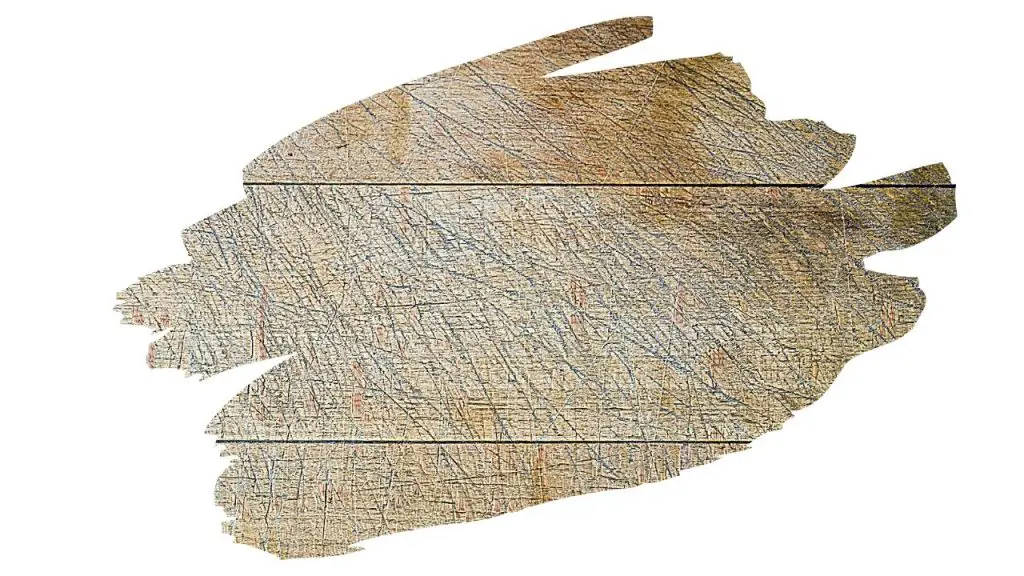So you’re just about ready to wrap-up your latest project. All thats left now is to add a few coats of finish and your job is done… or so you thought.
Unfortunately, as you gave your work piece a finishing touch, you’ve started to notice lots of tiny sanding scratch marks showing up all over the place. What are you going to do!
Well, before you add a coat of polyurethane, its time to take stock and ask yourself; does polyurethane really hide sanding marks?
Laying on polyurethane isn’t the best way to hide sanding marks and scratches. Instead, you are going to want to do one of two things;
- Wet Sand The Wood: This method of sanding involves using water, or some other lubricant, to help remove the scratches as you sand (ideally without marking the surface any further).
- Remove The Finish First: This method involves you having to start all over again by removing the scratched-up finish. Once the finish is removed, and you are down to the bare wood, you can apply a fresh coat of polyurethane.
Now, typically, my advice is to go straight to method number 2 and just remove the finish and start all over again.
Trying to wet-sand troublesome marks – enough so that the wood surface is uniformly smooth once again – is a thankless task.
It is difficult to get that even smooth look by wet sanding alone. And adding polyurethane over the marks won’t fix the problem.
So what will solve sanding marks? Well, just keep reading to find out…

This post may contain affiliate links to products that we receive a commission for (at no additional cost to you). Learn more here.
1 Does Polyurethane Hide Imperfections?
If the scratches are on a semi-gloss or satin finish, then polyurethane can hide those small ‘barely-there’ imperfections. And even then, those minuscule flaws might only seem noticeable to you since you’re actively searching for them.
On the other hand, if the finish is high-gloss, then even the smallest imperfection can stand out.
2 Will Polyurethane At Least Fill In Scratches?
You can purchase polyurethane filled pens that are designed specifically to help you fill in small nicks and grooves on wooden surfaces.
Varathane’s 248125 Scratch Repair Polyurethane Pen does exactly that. You can use this handy stencil to apply clear fast-drying polyurethane into all of those annoying nicks.
Check out the latest price for this Scratch Repair Pen on Amazon.
Now, this may seem like a quick answer to your sanding head-scratcher of a problem, but there is one hitch. Using a scratch repair pen to spot repair here and there is fine. But if you have a larger surface area that needs fixing, it isn’t a practical (or cost effective) answer to your problem.
3 How Do You Get Rid Of Sanding Marks?
There are two practical ways of getting rid of sand marks;
SANDING (By Wet Sanding The Surface)
Wet sanding is when we use water (typically) or some other lubricant (such as oil) as we sand.
Now, when we use sandpaper, dust and tiny bits of wood can start to build up underneath the sandpaper. Those dust/bits are abrasive material that will cause scratches and marks much larger than the grit particle size of the sandpaper grit.
The job of water and/or lubricant is to prevent grit from building up under the sandpaper as we work it over the wood surface. This method of sanding leaves behind a much more uniform looking finish.
For a visual guide to wet sanding, check out Brad Angove’s quick tutorial below:
START AGAIN (By Stripping The Finish)
Sometimes not even sanding will fix the problem of deep-grooved scratches.
In which case, there is no shame in simply starting over again by removing the finish and re-coating.
If you only need to take off a single coat of finish, then you can make quick work of removing it.
You will need to apply a chemical paint or varnish stripper onto the wood finish. Wait a few minutes for the polyurethane to soften (follow the instructions the chemical stripper). And then scrape off the finish using a metal scrapper.
Go over the wood until you’ve got all the polyurethane removed, and you are down to bare wood.
After which, you will need to sand the wood again before starting over with a new finish.
For a full visual guide, just check out Instone09ine’s guide below. In it they’ll show you how to strip off a finish without damaging the bare wood underneath;
4 Can You Use Steel Wood To Sand Between Coats Of Polyurethane?
This can come down to personal preference. You can use either steel wool or sandpaper for smoothing out polyurethane finish between coats.
However, if you are using a water-based poly, then that can cause steel wool to rust over time.
So having said that, if you are using an oil-based poly, then either steel wool or sandpaper is fine.
But, if you want to flatten out a water-based finish, you probably shouldn’t be using steel wool.
Instead, opt for sandpaper (typically wrapped around a sanding block) when smoothing over those layers.
Also, sandpaper has another advantage over steel wool… it is better at evenly flattening the finish. Why? Well with sandpaper we can go over the finish more efficiently with progressively finer grits. This allows us to get that coat incredibly flat and level.
How To Get A Smooth Polyurethane Finish (Using Sandpaper):
- Starting with medium grit sandpaper of 150, sand down the finish.
- Afterward, move onto 180 grit, and sand again until there are no 150-grit scuff-marks left.
- Once done, (if you still see marks in the wood), move on up to 220 grit sandpaper. Use this to buff over the finish until any 180 grit scratches are nowhere to be seen.
5 What Happens If You Don’t Sand Between Coats Of Polyurethane?
Well, we sand between coats of polyurethane so that each successive coat of poly has something to adhere to.
Without those bits of dust and grit, it’ll be hard for the next poly coat to bond.
6 Do You Sand The Final Coat Of Polyurethane?
The very first coat is the one that will need the most sanding (if you want your finish to be as even as possible).
Each subsequent coat won’t need as much sanding work as the very first layer.
And the final layer won’t need any sanding at all (provided that it’s been spread on evenly).
7 How Long Should I Wait To Apply A Second Coat Of Polyurethane?
You can apply a second coat of polyurethane around 15 to 30 minutes after application. But don’t wait too long! If you wait around, and 2 hours passes, you will have missed your window of 2nd-coat-opportunity. In which case, you will need to wait a few days (72 hours to be exact) for the the finish to fully harden.
At which point you will need to give it a very light sand (with 220 grit sandpaper) and then re-coat.
Is 2 coats of polyurethane enough? And how many coats of polyurethane should I use? Well, first things first, 1 coat is never going to be enough. However, slapping on 6 or 7 coats is probably overkill. For surfaces that are going to go through a lot of heavy wear and tear (for example, hardwood floors), you are going to need to apply at least 3 coats. For everything else, you will need to layer on a minimum of 2 coats.
Final Thoughts
So, if your struggling to figure out what to do about unsightly sanding scratches, then here are a few things you need to bear in mind;
- Polyurethane isn’t going to do a very good job hiding very obvious scratches.
- However, if you have scratches in a semi-gloss or satin finish, polyurethane might be able to hide very tiny marks.
- If the scratches are very noticeable, then you can try wet-sanding the wood to remove them.
- And if all else fails, you can always opt to simply strip the finish and start again.

